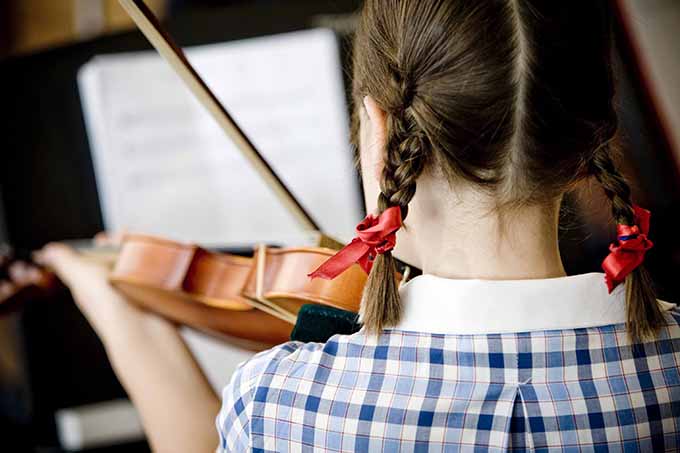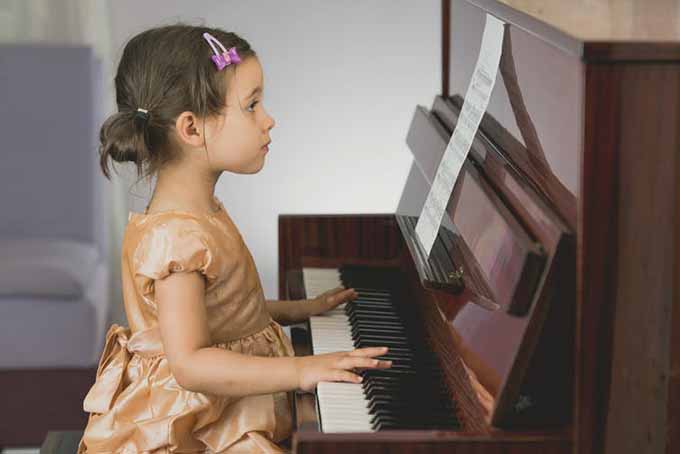
Neuroscience has found a clear relationship between music and language acquisition. Bluntly: learning music in the early years of schooling can help children learn to read.
Both activities share a network superimposed on the brain. From an evolutionary perspective, the human brain developed the acquisition of music much earlier than that of language and then used that ability to create and learn language .
At birth, babies understand language as if it were music. They respond to the rhythm and melody of the language before understanding what the words mean.
Babies and young children imitate the language they hear using those elements of rhythm and melody. That’s why children start talking in a somewhat sing-song way.
Children trained in music are better readers
The basis of reading is the expression and to learn to speak, children have to be able to distinguish the expression of other sounds. Music helps them do it .
After all, reading is discovering the meaning of each word. A series of skills are combined to help us discover those meanings, including the ability to distinguish between the sounds of words and the fluency of reading.
Fluency includes the ability to adjust patterns to accentuate and intone a phrase, such as when we show anger or joy, and the ability to choose a correct intonation, such as when we ask a question or exclamation. These highly developed auditory learning techniques are optimized with musical training .
Children trained in music also have a better capacity for reading comprehension .
Music also gives us information about children’s problems with reading. Several investigations have determined that children of three and four years who can maintain a constant musical rhythm, at five years are better prepared at the time of reading than those who did not follow the rhythm.

Children should also be taught to read music, which reinforces the connection of symbols with sound, which is crucial to learning to read. from www.shutterstock.com
What parents and teachers can do
Language learning begins the moment you are born , when parents talk and sing to babies. They create a bond with their parents and their community through voice. So singing to a baby establishes a bond and starts up your auditory learning network.
Taking the children every week to well-structured, high-quality music classes will develop the musical skills that have been found to be so effective in learning to read. It is vital to look for classes that include movement and singing activities that respond to both sound and silence. Musical toys and instruments of good quality should be used.
The beginning of the preschool stage is crucial for the development of language. Music learning programs should be sought in the same way as well structured, daily and taught by qualified teachers. The songs, rhythms and rhythmic activities that our children learn in preschool and daycare prepare them to read.
Music programs should develop techniques consecutively. They should encourage children to work to sing in tune, to play instruments and to move in an improvised manner following the structure of the music.
We should also teach children to read notes and musical signs when they study music. This reinforces the connection of the symbols with the sound, which is also crucial when reading the words.
Active learning is key. Having high background music does not favor the development of language and, in fact, can hinder the ability to distinguish the expression of all other sounds.
This does not mean that children need silence to learn. In fact, the opposite would be the right thing to do. They need a variety of sound environments and the ability to choose what the brain needs in terms of auditory stimulation. Some students need noise to concentrate, another needs silence and each preference is determined by the type of learning for which they have been stimulated.
The sound environment is something more than the noise that can be in a class. It focuses on the quality of sound. Brakes that squeal every three minutes, air conditioning that makes noise, background music that suits some but not others, irregular bumps or shocks. All this has an impact on the child’s ability to read.
Teachers can let students get excited in their classes and make noise in an appropriate way, but they should have a few appropriate headphones in the classroom for when students want to get away from the sound.
Music for everyone
Our auditory acquisition network is the best information collection system in our brain. Music can enhance the biological elements of language. Music prepares children to read and supports them throughout their relationship with reading.
Unfortunately, the least advantaged students are the least likely to have a musical education in their schools. However, research warns that they benefit the most when they study music.
As we look for new ways to improve reading methods in young children, we should also focus on music learning in kindergartens and primary schools.
Author Bios: Anita Collins is an Adjunct assistant professor and Misty Adoniou is an Associate Professor in Language, Literacy and TESL both at the University of Canberra